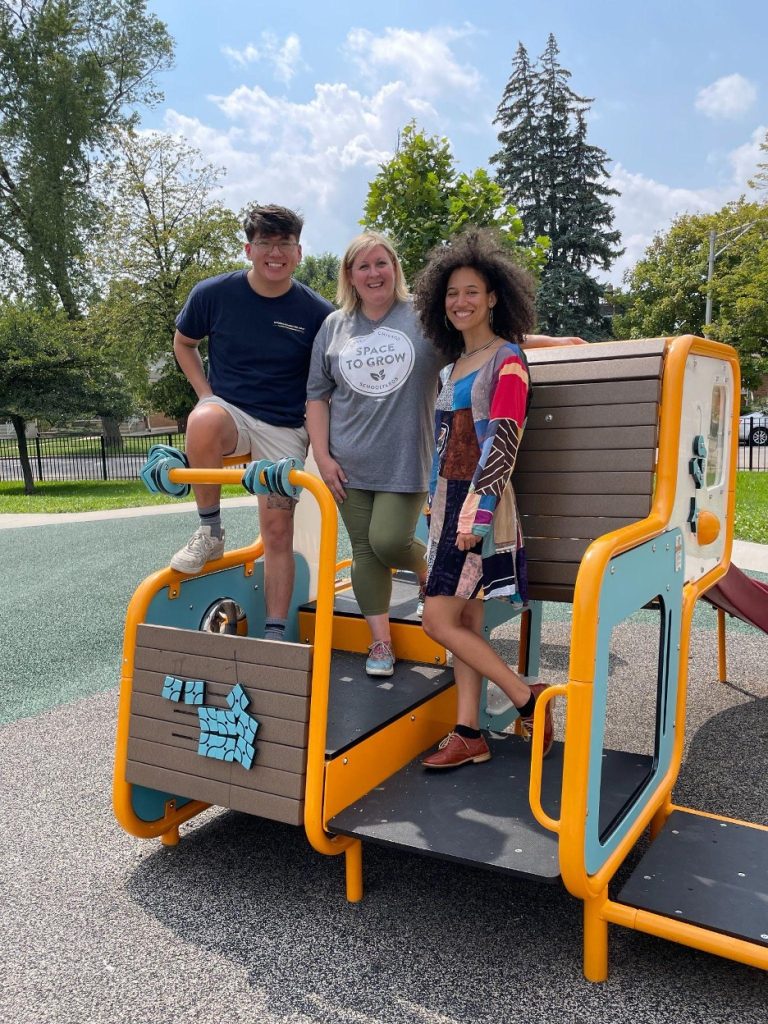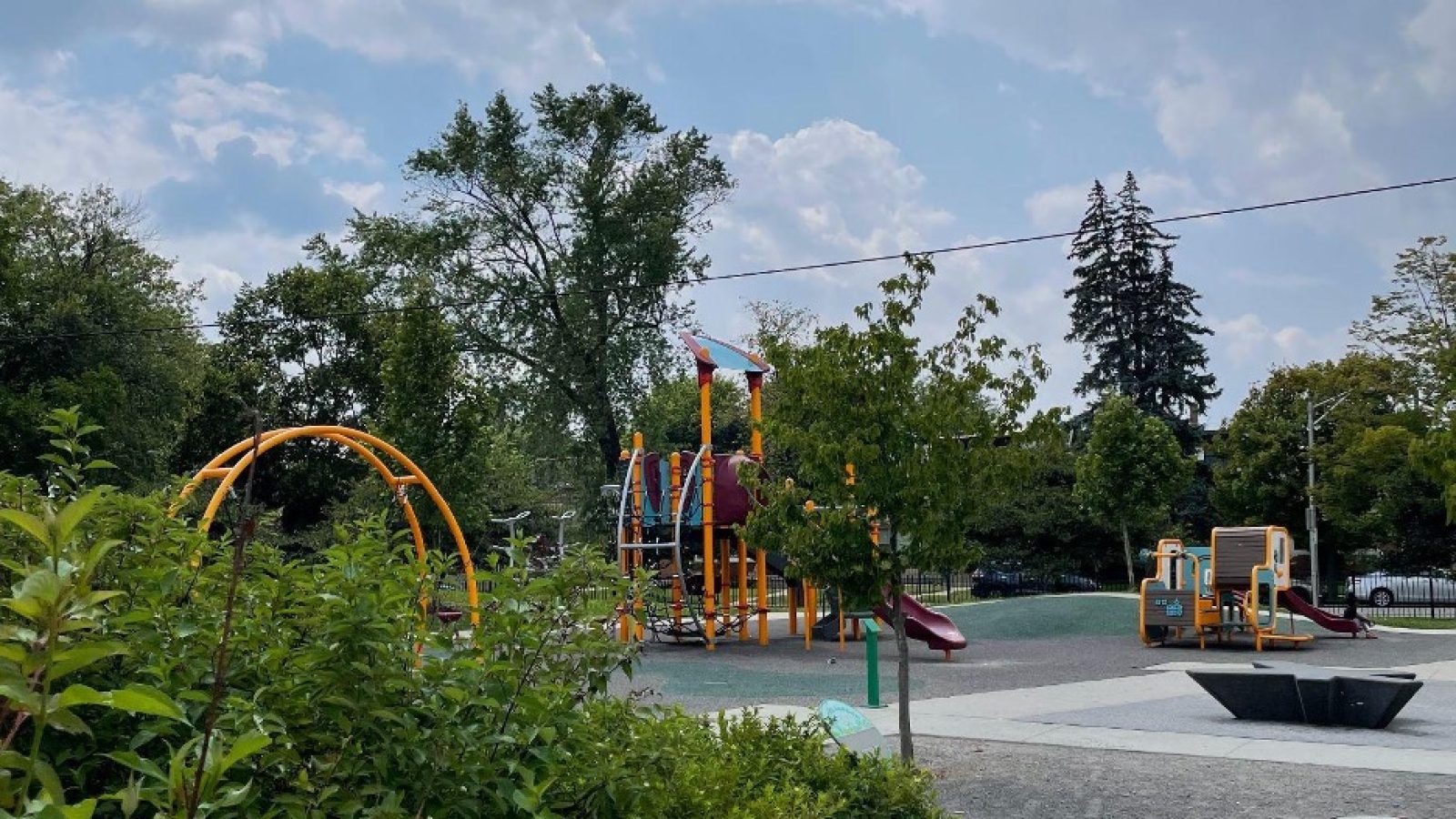By: Sergio Vargas, Chicagoland Conservation Manager
In Chicago’s South Side Chatham neighborhood, Arthur Ashe Elementary stands as a testament to the brilliance of community demand and demonstrates the transformative power of the Space to Grow initiative. This Chicago-rooted endeavor, spearheaded by our partners at Openlands and the Healthy Schools Campaign, aims to convert gray school infrastructure into lively, green havens for students and their surrounding communities. This is a chance for individuals to welcome a healthy change that inspires youth to engage with nature and its benefits for everyone.
I first learned about Space to Grow through Openlands’ Danielle Russell, who is the Green Schoolyards Program Manager. Openlands has been a close partner of IEC, and connecting with Danielle was my first step to learning more about local efforts to improve schools sustainably and interactively. Sure enough, I started noticing Space to Grow plaques on walks throughout Chicago and realized the unique qualities of each schoolyard.

Nature-Based Solutions
The Space to Grow initiative provides various solutions to common environmental challenges in the city, primarily: flooding, lack of tree canopy, and inequitable access to greenspace.
Space to Grow’s native infrastructure helps to mitigate the ever-growing concern of flooding that has been persistently wreaking havoc on many communities, especially those on Chicago’s Southeast and West sides. The rainfall and ensuing flooding have been so pervasive that Biden’s administration approved a federal declaration that signaled additional resources and assistance to those affected by torrential storms throughout June and July 2023. These deluges will only become more commonplace, threatening more communities and families’ livelihoods and, like the climate crisis as a whole, hitting low-income, Black & Brown communities the hardest.
In addition to being exacerbated by the ongoing climate crisis, Chicago’s decreasing tree canopy has also led to the loss of natural avenues of floodwater capture, harming communities and local ecosystems. The urban tree canopy across the South and West sides is severely lacking, which has worsened the damage from flooding. Space to Grow’s utilization of native plants and permeable surfaces act in tandem to mitigate some of the flooding that has plagued communities.
While there are a myriad of variables associated with flood risk and mitigation, it is incredible to see how effectively water is captured underneath turf fields like at Ashe Elementary; the vast number of gallons that can be held is critical in preventing this water from challenging our stormwater management system and the homes that are nearby. Space to Grow provides an example of how nature-based solutions can mitigate the adverse impacts of the climate crisis while adding value to the community.
Although so many variables are at play, talking to locals where a Space to Grow site has been developed suggests that these efforts to reduce flooding are working. However, the benefits didn’t stop there. During my visit, outside of the school day, we saw students who were enjoying the playground and green space, further emphasizing how welcoming the space is and how comfortable local kids feel interacting with native habitats.
The Space to Grow initiative is an opportunity to completely reimagine how students and the community interact with their local schools and how these schoolyards can serve many functions that benefit our people and our planet. Students can be seen on the equipment and engaging with the schoolyard in an entirely new way. With the introduction of native and indigenous plant species and gardens, the native plants can be a point of education for the balance of sensitive ecosystems, the roles of pollinators, and the relationship between people and nature in nurturing these spaces.
Many schools are also trying to create programming for school gardens, which can offer a tangible understanding of the principles of chemistry, biology, agriculture, and more. The gardening skills learned can also be brought home to further build upon this interactive knowledge, perhaps fostering a new hobby that’s shared amongst the family.

Conclusion
In hindsight, the purpose behind my visit to the schoolyard becomes clear: it’s about recognizing the potential for positive change, witnessing the tangible results of collective action, and understanding how these initiatives can be the cornerstone of a more sustainable and harmonious coexistence. As Chicago grapples with the complexities of a changing climate, Space to Grow is a beacon of hope and a testament to the transformative power of marrying education, environment, and community well-being.
Beyond doubt, Space to Grow doesn’t just represent a campaign to tackle immediate challenges; it symbolizes an opportunity to reimagine the symbiotic relationship between students, communities, and their local schools. The transition of these schoolyards into multifunctional spaces carries the potential to promote teaching moments and create long-lasting interests. Not only does it mitigate flooding and compensate for the loss of natural flood water absorption, but it also nurtures ecosystems, fosters education, and promotes a stronger sense of community. We find a harmonious realignment of youthful curiosity and environmental stewardship in these green spaces, setting a promising course for the future.
Click here to follow Space to Grow’s work, and please consider supporting their mission to develop flourishing native habitats in the neighborhoods that need it most.

